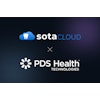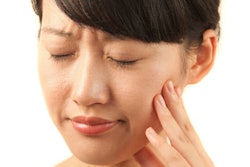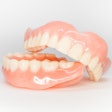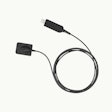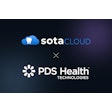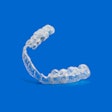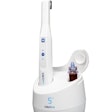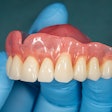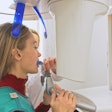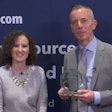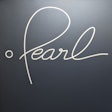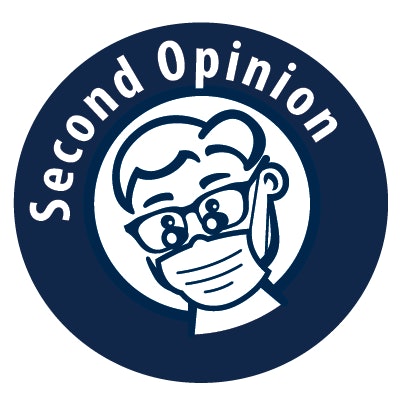
It's a common scenario for virtually all dentists: Patients come to your office complaining of jaw pain. In the process of explaining their conditions, they may also mention that they're getting tension headaches, and they can't get a good night's sleep either.
Sounds like a referral to a medical specialist or perhaps a prescription pain medication is in order. But before you send the patient to a physician, or down the rabbit hole of potential opioid dependency, know what you might be missing.
 Martin Gorman, DDS.
Martin Gorman, DDS.With the advent of new technology and research, increasingly there's an essential role for the dental professional to play in treating not only the symptoms of these common conditions but also one of their primary underlying causes -- a medical condition known as temporomandibular disorder (TMD).
As many as 10 million Americans had TMD in 2017, according to an estimate by the National Institutes of Health. The pain and discomfort that temporomandibular joint (TMJ) disorders cause may be mild to severe and can be intermittent, with constant symptoms varying from patient to patient in intensity and duration.
For reasons still not entirely known, TMJ disorders are twice as prevalent with women as they are with men, according to statistics from the National Institute of Dental and Craniofacial Research.
Symptoms and causes
The most common TMJ complaint is migraine headache accompanied by jaw, head, neck, or shoulder pain, or a combination of these. Symptoms of TMD may vary and may also include the following:
- Pain around the ears
- Pain in the jaw, tooth, face, neck, or shoulders
- Clicking or popping of the jaw (jaw instability)
- Inability to open the mouth in a normal range of motion
- Grinding teeth
- Ringing or fullness in the ears
- Migraine or any other type of headaches
- Sinus pressure and lack of draining
Migraine headaches usually start in the forehead, temples, or back of the head. Those who clench or grind their teeth may also develop migraine-like headaches. Although the majority of migraines and headaches have various causes, they all have one thing in common: a dysfunction of the temporomandibular joint of the jaw.
Comprehensive treatment
Effectively addressing TMJ disorders involves treatment of three factors: incorrect bite alignment (occlusion); disproportionate balance between the muscles and joints of the jaw, head, and neck; and management of stress imbalance through at-home care. These components all work together and inform each other, so the likelihood of successful treatment decreases when not addressing all three parts.
“Successful diagnosis and treatment of your patients' TMJ conditions requires state-of-the-art technology.”
Before the progression of advanced dentistry technologies, diagnosing a patient's state of occlusion required some guesswork. Dentists could only measure the forces of a bite and subsequently balance those forces properly between the muscles and joints of the head and neck with the aid of imprecise and unreliable tools, such as pressure indicator paste, articulation paper, and waxes.
These techniques were often inadequate and lacked the sensitivity necessary to detect simultaneous contact. Furthermore, these traditional methods failed to measure biting time and force, which are both essential assessments when diagnosing TMJ disorder.
Successful diagnosis and treatment of your patients' TMJ conditions require state-of-the-art technology, as only a computerized test can accurately and objectively measure your patient's bite/occlusion.
Latest technology
Among the latest in technology in the treatment of TMD are developments such as joint vibration analysis and imaging modalities.
Joint vibration analysis provides a fast, noninvasive, and repeatable measurement of TMJ function to aid in the proper diagnosis. Understanding TMJ function is vital anytime you are changing the vertical, lateral, or anterior/posterior position of the mandible.
The pharyngometer test is used to map the cross-sectional diameter of the oral airway and measure its stability. This test allows existing points of obstruction and the patient's optimal breathing position to be discovered. To check the nasal passages, the rhinometer test is performed. This tool helps to rule out any obstruction or enlargement in the turbinates as the cause of a sleep disordered breathing problem. In addition, these tests are instrumental in determining patients' eligibility regarding successful oral appliance therapy.
A cone-beam CT scan allows for excellent visualization of facial skeletal anatomy but at significantly lower radiation dosages than medical-grade CT scanners. These scans are used most often for obtaining screening views of the airways for sleep apnea, as well as the upper and lower jaw and condyles for TMD issues.
The good news is that TMJ disorders and the associated pain -- including migraine headaches -- can be treated effectively. There's no need for your patients to continue to live with pain when you can provide relief from these symptoms without drugs.
Martin Gorman, DDS, is in practice at the Gorman Dental Center in Encino, CA.
The comments and observations expressed herein do not necessarily reflect the opinions of DrBicuspid.com, nor should they be construed as an endorsement or admonishment of any particular idea, vendor, or organization.



